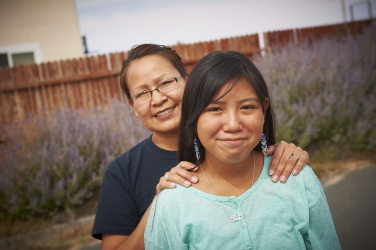
Center for American Indian Health
Authors: Aggie J. Yellow Horse, Nicholet A. Deschine Parkhurst, and Kimberly R. Huyser
Contact hours: 1.0
Expiration date: December 31, 2021
Course price: $10
Course Summary
The Coronavirus 2019 (COVID-19) pandemic has disproportionally affected Indigenous Peoples. Unfortunately, there is no accurate understanding of COVID-19’s impacts on Indigenous Peoples and communities due to systematic erasure of Indigenous representation in data. Early evidence suggests that COVID-19 has been able to spread through pre-pandemic mechanisms ranging from disproportionate chronic health conditions, inadequate access to healthcare, and poor living conditions stemming from structural inequalities.
Using innovative data, we comprehensively investigate the impacts of COVID-19 on Indigenous Peoples in New Mexico at the zip code level. Specifically, we expand the U.S. Centers for Disease Control and Prevention’s Social Vulnerability Index (SVI) to include the measures of structural vulnerabilities from historical racisms against Indigenous Peoples. We found that historically-embedded structural vulnerabilities (e.g., Tribal land status and higher percentages of house units without telephone and complete plumbing) are critical in understanding the disproportionate burden of COVID-19 that American Indian and Alaska Native populations are experiencing.
We found that historically-embedded vulnerability variables that emerged epistemologically from Indigenous knowledge had the largest explanatory power compared to other social vulnerability factors from SVI and COVID-19, especially Tribal land status. The findings demonstrate the critical need in public health to center Indigenous knowledge and methodologies in mitigating the deleterious impacts of COVID-19 on Indigenous Peoples and communities, specifically designing place-based mitigating strategies.
Citation: Yellow Horse AJ, Deschine Parkhurst NA, and Huyser KR. (2020). COVID-19 in New Mexico Tribal Lands: Understanding the Role of Social Vulnerabilities and Historical Racisms. Front. Sociol., 22 December 2020. Retrieved January 18, 2021 from https://www.frontiersin.org/articles/10.3389/fsoc.2020.610355/full.
Criteria for Successful Completion
A score of 80% or higher on the post test, a completed evaluation form, and payment where required. No partial credit will be awarded.
Accreditation
To find specific accreditations or approvals, click here.
Course Objectives
When you finish this course you will be able to:
- Name 3 impediments to survival of COVID-19 in people on tribal lands.
- Identify 5 historically embedded vulnerabilities of tribal peoples in the United States.
- State 4 ways in which the dominant society can address inequities in Indigenous communities.
